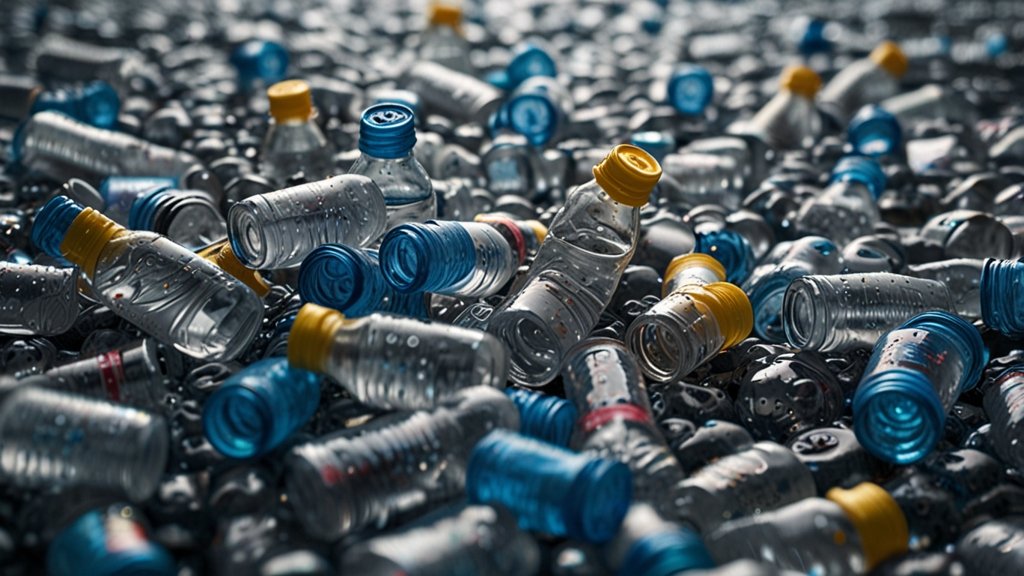The question, “doe niagra bottled water contain microplastics,” has garnered attention among consumers seeking clarity about the purity of their water. As concerns over plastic pollution grow, microplastics in bottled water have become a pressing issue for researchers and the general public. In this article, we delve into the topic, explore studies, and understand what it means for bottled water consumers.
What Are Microplastics?
Microplastics are tiny plastic particles, usually smaller than five millimetres, that result from the degradation of larger plastic items. These particles can enter the environment in various ways and eventually infiltrate our food and water systems. The inquiry, “doe niagra bottled water contain microplastics,” reflects a broader concern about these particles’ widespread presence and potential impact on health.
The Bottled Water Industry and Microplastics
Studies conducted over recent years have revealed that many bottled water brands contain microplastics. This issue has raised the question, “doe niagra bottled water contain microplastics,” among concerned consumers. According to global research, bottled water often shows higher microplastic levels than tap water due to the bottling process and the materials used in packaging.
Niagara Bottled Water: Purity Claims
Niagara bottled water is well-known for its commitment to quality and purity. The brand uses advanced filtration and purification processes to ensure its water meets stringent safety standards. However, the question remains, “doe niagra bottled water contain microplastics,” as the source of contamination often lies in the packaging or production methods.
Research on Microplastics in Bottled Water
Several global studies have investigated the presence of microplastics in bottled water, with varying results. While some brands have shown significant traces of microplastics, others have displayed minimal levels. Addressing the question, “doe niagra bottled water contain microplastics,” requires examining specific test results related to the brand’s products.
Potential Sources of Microplastics in Bottled Water
When addressing, “doe niagra bottled water contain microplastics,” it is essential to understand how these particles enter bottled water. Common sources include:
- The plastic material used for bottles and caps.
- The bottling process, may introduce microplastic contamination.
- Environmental exposure during production and distribution.
Are Microplastics Harmful to Health?
Understanding whether Niagara bottled water contains microplastics also requires evaluating the health implications of these particles. While research is ongoing, preliminary studies suggest that consuming microplastics could have adverse health effects. The extent of these effects, however, remains under investigation.
Regulatory Standards and Microplastics
Currently, there are no universally established regulations concerning microplastics in bottled water. This regulatory gap makes answering the question, “doe niagra bottled water contain microplastics,” more complex, as testing and reporting standards can vary.
Niagara Bottled Water and Consumer Trust
Niagara bottled water emphasizes its commitment to providing its consumers safe, clean drinking water. However, with increasing public interest in microplastics, answering, “doe niagra bottled water contain microplastics,” requires greater transparency and scientific evidence from the brand.
The Role of Packaging
One key factor in determining whether Niagara bottled water contains microplastics is the packaging materials. Many brands are now exploring alternatives to traditional plastic bottles to minimize contamination and address consumer concerns.
How to Reduce Microplastic Exposure
For consumers asking, “doe niagra bottled water contain microplastics,” it is essential to consider ways to reduce exposure. These may include:
- Choosing brands with rigorous testing protocols.
- Opting for reusable containers and filtered tap water when possible.
Scientific Studies and Niagara Bottled Water
The specific question, “doe niagra bottled water contain microplastics,” has yet to be conclusively answered in large-scale, peer-reviewed studies. However, ongoing research into bottled water contamination provides valuable insights into the broader issue of microplastics.
Transparency and Consumer Awareness
Brands like Niagara are responsible for addressing questions such as, “doe niagra bottled water contain microplastics,” by being transparent about their testing processes and results. Increased transparency builds consumer trust and allows individuals to make informed choices.
Steps Taken by the Bottled Water Industry
Many bottled water brands, including Niagara, are adopting new technologies and materials to address concerns about microplastics. These efforts aim to answer questions like “does Niagara bottled water contain microplastics” with greater confidence in the future.
Environmental Concerns
Microplastics are a concern for personal health and the environment. Whether Niagara bottled water contains microplastics ties into a broader effort to reduce plastic pollution worldwide.
Future Research and Bottled Water
Scientific advancements will be crucial in answering questions like, “doe niagra bottled water contain microplastics.” Continued research will provide more precise insights into the prevalence and impact of microplastics in bottled water.
Consumer Demand for Purity
As more consumers become aware of microplastic contamination, the demand for pure and safe bottled water continues to grow. The question, “doe niagra bottled water contain microplastics,” reflects this increasing awareness and desire for accountability.
Conclusion
The question, “doe niagra bottled water contain microplastics,” underscores the growing concern about plastic pollution and its impact on health and the environment. While Niagara bottled water is known for its commitment to quality, ongoing research and transparency are essential to address these concerns fully. As consumers, staying informed and supporting brands that prioritize purity and sustainability is key to navigating this complex issue.

